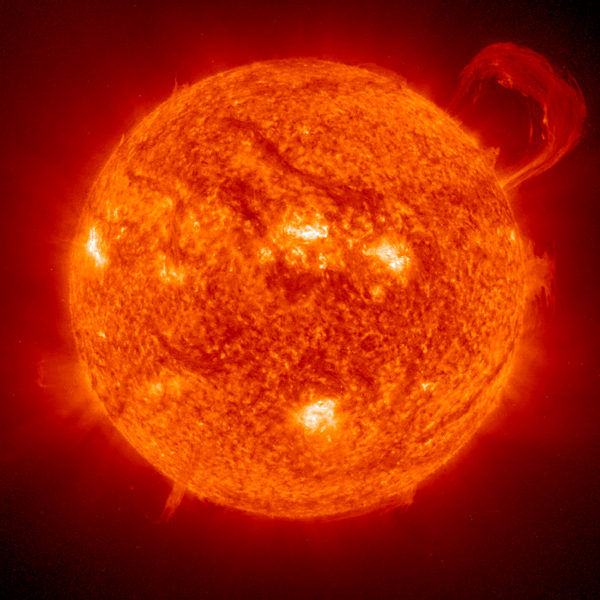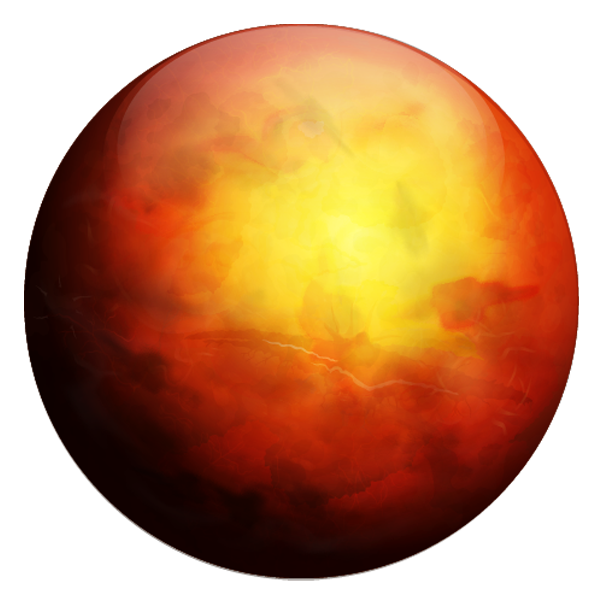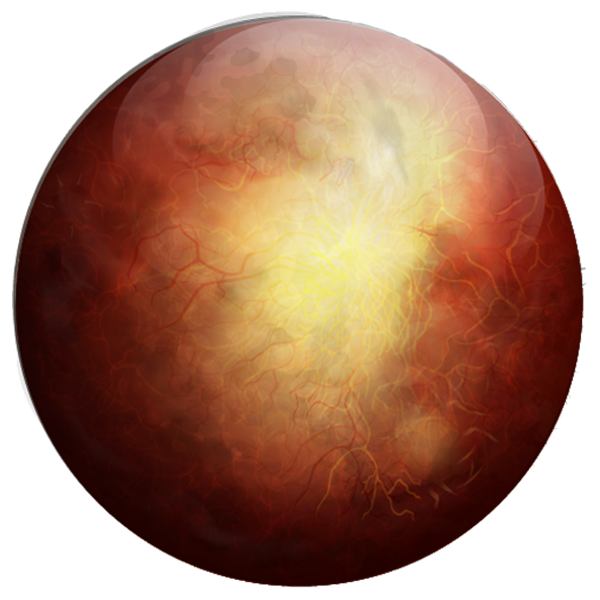

The Sun is moving from Aries to Taurus in the next 24 hours.
#Sun #Taurus #Aries

Mars is moving from Aquarius to Pisces in the next 24 hours.
#Mars #Pisces #Aquarius

Mercury is moving from Aries to Taurus in the next 24 hours.
#Mercury #Taurus #Aries

Venus is moving from Aquarius to Pisces in the next 24 hours.
#Venus #Pisces #Aquarius
The Moon returns to the evening sky by the end of the week. The first of April’s two New Moons occurs on the 1st at 2:24 am Eastern Daylight Time. You should be able to see the slender crescent Moon in the western sky in the deepening twilight on the evening of the 2nd. If you want a true observing challenge, try to spot the hairline lunar crescent just above the western horizon on the 1st. Luna will only be 18 hours past New for observers on the east coast of the U.S., and you might need binoculars to spot her. You will need to have a clear evening and a flat western horizon as the crescent will only be two degrees above the horizon some 20 minutes after sunset. Observers on the west coast will have a somewhat better chance to see this very young crescent since they will have an ocean horizon and the Moon will be slightly higher in the fading twilight. Luna quickly climbs into the evening sky, and you will find her cozying up to the Pleiades star cluster on the evening of the 4th.
You still have a few nights to contribute observations to the Globe at Night citizen-science program. As we mentioned last week, the target constellation is Leo, the Lion, which is high in the eastern sky by 10:00 pm local time. Leo’s outline should be easy to find from semi-rural skies, and his brightest stars should be visible from the suburbs in the absence of direct night lighting. I had a chance to see him in all of his regal feline glory this past weekend from Virginia’s Northern Neck, and I submitted an observing report to the Globe at Night web app using my smart phone while out with my telescope. The current campaign runs through the 2nd, so you still have a few chances to make your own contribution to science in the crisp of a spring night.
Winter’s bright constellations are still prominent in the western sky as evening twilight fades to night. The distinctive pattern of Orion is well-placed in the southwestern sky at 9:00 pm, and his bright companion stars are still easy to spot. If you have binoculars or a small low-power telescope, sweep the area between Orion and the bright yellow star Capella in Auriga where you will find a number of bright star clusters. Another good hunting ground for these is the area bounded by the stars Betelgeuse in Orion, Sirius in Canis Major, and Procyon in Canis Minor. Here you will find a faint region of the Milky Way and the obscure constellation of Monoceros, the Unicorn.
As Leo moves to the meridian by midnight, the star clusters and nebulae of the winter sky are replaced by fuzzy objects of an entirely different nature. The area bounded by Denebola, the “tail” of Leo, the bright rose-tinted star Arcturus, and the bright blue star Spica is speckled with hundreds of external galaxies that belong to the Virgo Galaxy Cluster. Several dozen of the brighter ones can be seen inn small telescopes, and larger apertures reveal several hundred more. The heart of the cluster is located about 50 million light years away from us, but we still “feel” its influence. Our Milky Way galaxy is a far-flung member of cluster.
Between us and the Virgo cluster is a scattered group of faint stars that can only be easily seen under dark skies. Its brightest stars are only of fourth magnitude in brightness, but up to 60 stars may be glimpsed far from urban areas. The group has been recognized since the time of Ptolemy as the constellation Coma Berenices, the Hair of Queen Berenice, which she offered as a sacrifice for the safe return of her husband from battle in 245 BCE. About 50 of the visible stars are part of a star cluster located 290 light-years away.
The bright planets are still clustered in the pre-dawn sky, visible in the southeast as morning twilight begins to brighten the sky. Venus leads the parade, beaming brightly through the gradual increase in sky brightness. Trailing a few degrees to the right of Venus is ruddy Mars, and in between the two is the yellow glow of Saturn. Watch mars close in on Saturn by the end of the week. On the morning of the 5th they will be less than half a degree apart.

Mercury is moving from Pisces to Aries in the next 24 hours.
#Mercury #Aries #Pisces
The Moon spends the week drifting along the southern reaches of the ecliptic, keeping company with the rising stars of summer in the early morning skies. Last Quarter occurs on the 25th at 1:37 am Eastern Daylight Time. Luna may be found just north of the bright star Antares in Scorpius on the morning of the 23rd. On the 25th she sits in the middle of the “Teapot” asterism in Sagittarius. If you have to choose one morning to rise well before the Sun this week it should be the morning of the 28th. At that time the Moon’s waning crescent will be grouped with the planets Venus, Mars, and Saturn in the southeastern part of the sky. This will be one of the best such groupings to occur in 2022.
The absence of the Moon from the evening sky signifies that it’s time for the March campaign for the citizen-science program, Globe at Night. This program aims to engage people to be more aware of the state of the night and the growing threat of light pollution. Now entering its 13th year, the program solicits simple naked-eye observations of the sky from the public. So far this year over 3500 observations have been logged on the Globe at Night website, and it is hoped that by the end of the year the number of reports will surpass the 25,000+ recorded in 2021. This month’s featured constellation is Leo, the Lion, which may be found high in the eastern sky at the end of evening twilight. Leo consists of two distinct asterisms, the first of which is anchored by the bright star Regulus. To the north of this star you will see a semi-circle of second- and third-magnitude stars that make up a figure commonly called “The Sickle”. Some 15 degrees to the east of the Sickle is a right triangle whose acute angle is marked by the second-magnitude star Denebola. Once you have found Leo, compare your view to the charts on the Globe at Night web app to record your observation.
Leo leads a group of stars that mark the transition from winter’s bright constellations to those of summer. This part of the sky has relatively few bright stars because we are looking away from the plane of the Milky Way, our home galaxy. Instead of seeing the layered star clouds of the Milky Way, when we look in the direction of these springtime constellations our gaze takes us into deep intergalactic space. The spring sky has relatively few star clusters and glowing nebulae, but it abounds in external galaxies, of which several hundred are visible with modest telescopes under dark skies. The vast majority of these galaxies are part of a group known as the Virgo Galaxy Cluster, with our own Milky Way a far-flung outlying member. The core of this supercluster is dominated by three enormous elliptical galaxies that harbor the equivalent mass of over one trillion (yes, with a “t”) Suns. These systems are so massive that they have distorted many of their nearby companions through tidal forces. Fortunately for us, they are about 55 million light-years away. While the Milky Way does feel some of their gravitational muscle, we’re far enough away from them to not feel their more catastrophic effects.
The Virgo Galaxy Cluster covers a large area of the sky, loosely bounded by Denebola in Leo, the bright stars Arcturus and Spica, and the stars that form the “handle” of the Big Dipper asterism. If you point a six-inch or larger telescope anywhere within this area from a dark-sky site the odds are that you will notice several fuzzy swatches of light in the eyepiece. In and of themselves they are not very spectacular, but when you realize that you are looking at the combined light of a few hundred billion stars shining across a gulf of space and time you may begin to realize just how vast the universe is.
As we mentioned earlier, the early morning sky is where you will find all of the brighter planets this week. Dazzling Venus and nearby ruddy Mars will continue to march eastward against the stars, and by the end of the week Venus will approach the golden glow of Saturn. Capping off the week is the arrival of the slender waning crescent Moon. Weather permitting, I’ll be outside watching the show.

The Sun is moving from Pisces to Aries in the next 24 hours.
#Sun #Aries #Pisces
 |
|
| Orion and contrails, imaged 2021 March 14 from Alexandria, Virginia with a Canon EOS Rebel SL2 DSLR. |
The Moon wends her way into the rising stars of spring, starting the week in the constellation of Leo, the Lion, then passing through the sprawling constellation of Virgo before ending the week in the obscure stars of Libra. Full Moon occurs on the 18th at 3:18 am Eastern Daylight Time. The Full Moon of March goes by many names, each of which pays homage to the arrival of boreal spring. The most common name is the Worm Moon, as earthworms are stirring in the thawing soil as the Sun warms the ground. It is also known as the Crow Moon, Plough Moon, and Sap Moon. Look for the second-magnitude star Porrima near the rising Moon on the evening of the 18th. Luna will inch closer to the star as the evening turns into the morning of the 19th, hiding the star for observers in Virginia and points north. On the following night the Moon rises with the bright star Spica.
The vernal equinox occurs on the 20th at 11:33 am EDT. At that moment the Sun reaches an ecliptic longitude of zero degrees. It is also the time when the center of the Sun’s disc crosses the celestial equator into the northern half of the sky. Residents of the Amazon River delta will see the Sun directly overhead at this time.
While the equinoxes mark the beginning of a season, they are also the times when we see the most rapid change in the length of daylight in both spring and autumn. For those of us coming out of the long nights of winter, the Sun’s northerly excursion adds just over 2.5 minutes of light to the length of each successive day. The flip side of this is that the nights are becoming successively shorter, hastening the departure of winter’s constellations. Daylight Time has given the stars of winter a brief reprieve, but if you want to enjoy the bright stars off Orion you only have a few more weeks before he leaves the dark night sky. This week he sets at midnight local time.
As Orion and his bright winter cohorts exit the sky, they are replaced by somewhat dimmer stars that form some familiar patterns. High in the northeast is where you will find the seven stars that make up the asterism known as the Big Dipper. After Orion, this is probably the most recognized star pattern in the northern hemisphere sky. While its stars are generally of second magnitude, they are visible from near-urban locales. Under dark-sky conditions, the Big Dipper appears in the context of its full constellation of Ursa Major, the Great Bear. The two stars that form the end of the Dipper’s “bowl” provide a convenient signpost to locate other springtime stars. If you draw an imaginary line from these stars toward the north, you will run into Polaris, the North Star. Extending the same line to the south will guide you to Regulus, the brightest star in Leo, the Lion. I always look forward to seeing these two constellations since they offer a variety of targets for small telescopes.
Late in the evening another springtime feature rises in the northeast. If you follow the “arc” of the “handle” of the Big Dipper you will find the solitary bright star Arcturus, whose rosy tint has always been a sure sign of warmer evenings for me. Arcturus is the brightest star in the northern hemisphere sky and fourth-brightest in the entire heavens. It is the brightest luminary in the constellation of Boötes, the Herdsman. Most of the constellation is made up of fainter stars, but from a dark site it reminds me of an ice cream cone, a sure harbinger of warmer weather to come.
Early risers have a good reason to get up before the Sun as the bright planets are gathering in the southeast as morning twilight begins to brighten the horizon. You should have no trouble spotting Venus, which blazes away in the star-poor regions of Capricornus. Just southwest of Venus is ruddy Mars, which should be an easy target for binoculars in the brightening sky. Both Venus and Mars are drawing a bead on Saturn, whose yellow hue should be brighter than Mars. The trio will continue to converge over the next couple of weeks and will be joined by the waning crescent Moon before dawn on the 28th.

Mercury is moving from Aquarius to Pisces in the next 24 hours.
#Mercury #Pisces #Aquarius
 |
|
| Orion Through The Trees, imaged 2019 February 16 from Mollusk, Virginia with a Canon EOS Rebel SL2 DSLR. |
The Moon brightens the evening hours this week, waxing from her First Quarter phase to a fat gibbous by the week's end. Luna begins the week situated between the bright star Aldebaran and the Pleiades star cluster in the constellation of Taurus, the Bull. She then wends her way into the northern reaches of the Great Winter Circle, passing near the Twin Stars of Gemini, Castor and Pollux. By the end of the week she enters the realm of the springtime constellations. On the 15th the Moon will be a few degrees north of the bright star Regulus in Leo. If you have binoculars or a small telescope you can watch Luna occult the third-magnitude star Eta Leonis I the early evening of the 15th. The star will disappear behind the Moon's dark limb at 7:46 pm Eastern Daylight Time, then re-appear on the bright limb at 10:32 pm EDT.
Yes, you read that correctly. This is the week when most of us in the U.S. set our clocks ahead by one hour and begin to observe Daylight Time. Residents of Arizona and Hawai'i are the only folks who don't participate in this annual ritual. Technically the change occurs at 2:00 am local time on the 13th.
Like it or not, the observance of Daylight Time is specified in the laws of the land. U.S. Code Title 15, Chapter 6, Subchapter IX spells it out in detail. The history of Daylight Time in the U.S. goes back to 1918, when it was first enacted by Congress as an energy-saving strategy in World War I. It was so unpopular that the law was repealed in 1919, when the decision to implement it was left up to state and local jurisdiction. It was next implemented nationwide by an executive order from President Franklin Roosevelt on February 9, 1942, and remained in effect through the course of World War II, ending on September 30, 1945. Once again, Daylight Time became a local matter until 1966, when Congress passed the Uniform Time Act, specifying the use of Daylight Time for the nation. At this juncture states were given the option to remain on Standard Time year-round. Arizona voted to do so, while in Hawai'i there was no need to do so due to its tropical latitude. Recently many states have passed legislation to observe either Daylight Time or Standard Time year-round, but Congress will need to approve these measures before they become law.
The waxing Moon gradually brightens the sky as the week passes. Fortunately, the early evening sky is still dominated by the bright stars of winter, which gives us something else to enjoy once we've perused Luna's battered face. A small telescope is well-suited for lunar exploration, and it's also a great way to look at the brighter stars. The stars Betelgeuse in Orion and Aldebaran in Taurus glow with a ruddy amber tint, while Capella, northernmost star in the Great Winter Circle, shows a pleasing yellow hue. Rigel and Orion's three "Belt Stars" have icy blue colors. Sirius, the brightest star in the night sky, offers a particularly interesting view. Its dazzle, concentrated in a pinpoint, seems to flicker through all the colors of the rainbow as atmospheric turbulence bends its incoming light.
The one advantage that I find in the switch to Daylight Time is that I don't have to get up early in the morning to catch the antics of the rising morning planets. Bright Venus should be an easy target in the southwestern sky an hour before sunrise. Look just a few degrees below the dazzling planet to spot the dimmer ruddy glow of Mars. These two planets will gradually draw closer together as they glide in tandem eastward through the stars of Capricornus. As twilight begins to brighten the sky the yellow glow of Saturn should become apparent. All three planets will converge during the last week of March.






